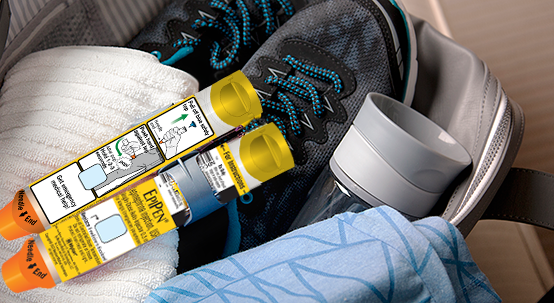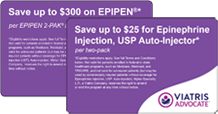
Food allergy prevalence
Food allergies are on the rise, especially food allergies in children. As many as 15 million Americans, or 4.6% of the US population, have food allergies. The most common food allergies that cause anaphylaxis include:
- Peanuts (peanut allergy is the main cause of anaphylaxis in children)
- Tree nuts (such as walnuts, pecans and cashews)
- Shellfish (such as shrimp and lobster—the main cause of anaphylaxis in adults)
- Fish
- Cow’s milk
- Eggs
- Wheat
- Soy
Severity is linked to many variables.
The severity of a food-triggered life-threatening allergic reaction depends on a number of factors—the amount eaten, the food form (cooked, raw or processed) and the co-ingestion of other foods. Other variables include the person’s age, the sensitivity at the time of ingestion, how fast the food is absorbed by the body and whether the person has another condition, such as severe or uncontrolled asthma.
Allergen avoidance means careful planning.
If you or your child has a food allergy, you’ll need to be careful to avoid allergic triggers. This means careful menu planning, avoiding cross-contact, reading food labels for alternative ingredient names to make sure you are aware of any “hidden” triggers and developing a food allergy action plan in the form of an anaphylaxis action plan.
Allergens aren’t always easy to avoid.
Food triggers can be difficult to avoid, particularly if the allergen is hidden in the meal or mislabeled in the ingredient list. In particular, children with potentially life-threatening food allergies, such as peanut allergies, may inadvertently eat a trigger food at school. In this case, it’s important that the child and his or her family, caregivers and teachers know how to recognize the signs and symptoms of anaphylaxis and know what to do in the event of a life-threatening allergic reaction: administer EPIPEN® (epinephrine injection, USP) or EPIPEN JR® (epinephrine injection, USP) Auto-Injector (or their authorized generics) immediately and seek emergency medical care. Be prepared with an anaphylaxis action plan.
Share This Site
Explore
Explore the latest savings offers for EPIPEN (epinephrine injection, USP) Auto-Injectors and the Authorized Generic for EPIPEN. See Terms and Conditions.
Antihistamines are not recommended for the life-threatening symptoms of anaphylaxis.
heading
INDICATIONS (the following information applies to both EPIPEN and its Authorized Generic)
EPIPEN® and EPIPEN JR® Auto-Injectors are used to treat life-threatening, allergic emergencies in people who are at risk for or have a history of serious allergic emergencies. EPIPEN and EPIPEN JR are for immediate administration by you or your caregiver. They do not take the place of emergency medical care. You should get emergency help right away after using your EPIPEN or EPIPEN JR.

Patient Information
Please select from the following:

Prescribing Information
Please select from the following:



